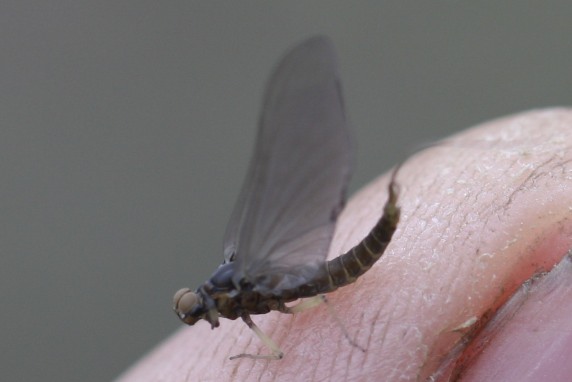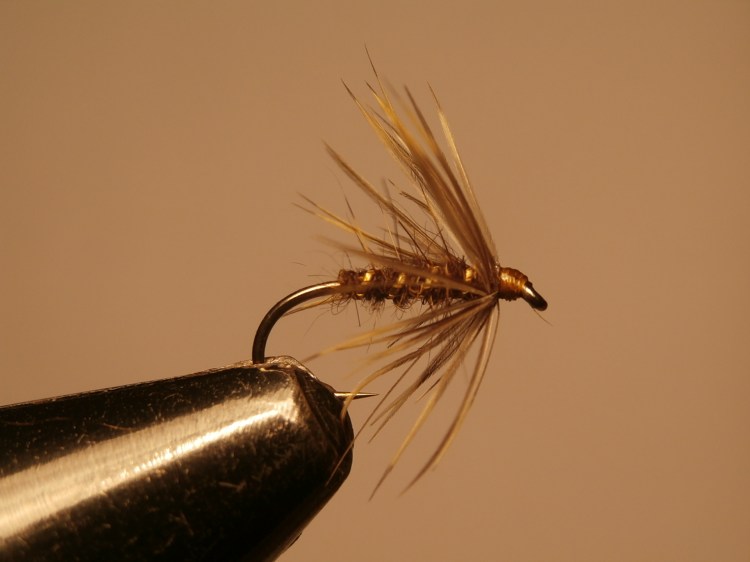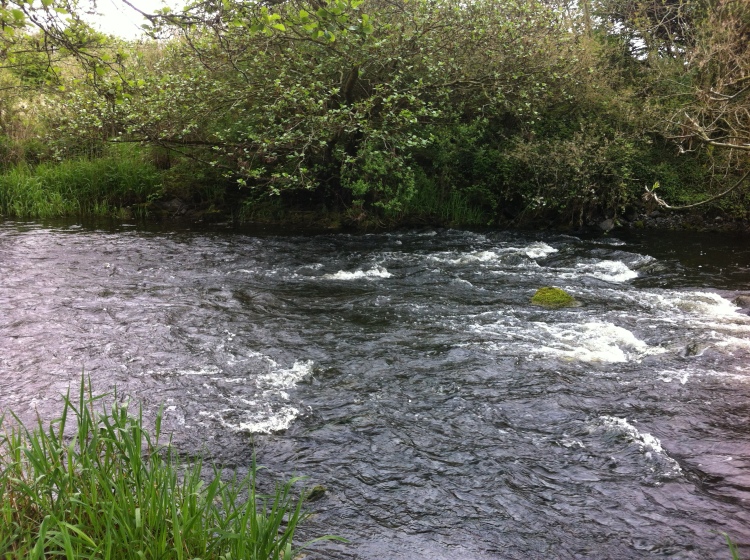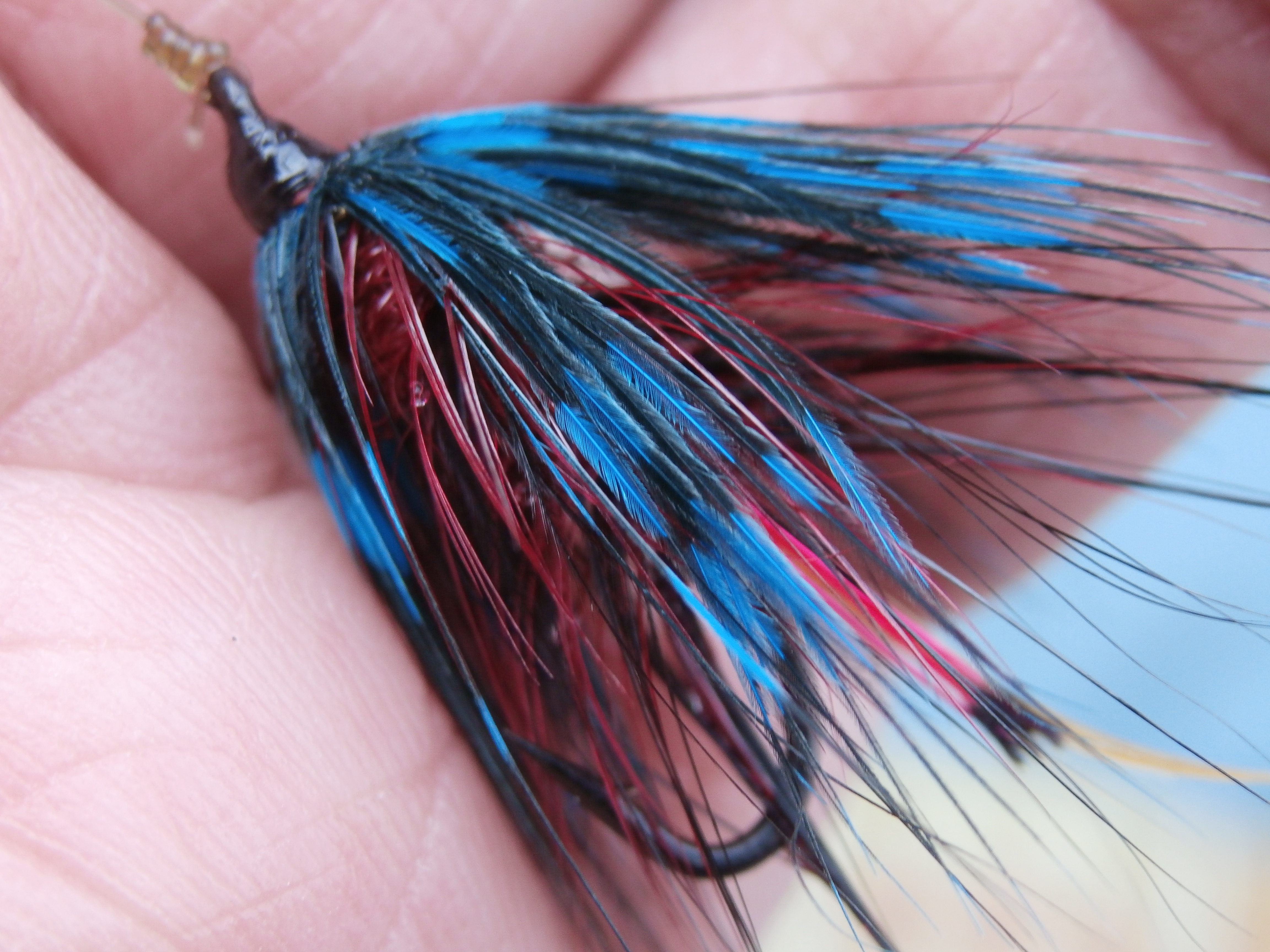First I have to say a heart-felt ‘thank you’ to all of you who read my ramblings on this blog. I guess I must infuriate some of you as I roam across a vast swathe of different angling genres, never settling on just salmon fishing or fly tying. I jump around from topic to topic as the fancy takes me, perhaps an insight into my disturbed mind and legendary short attention span. Today I am wandering off down another path, this time to offer some thoughts to those of you who are new to fly fishing for trout and live or are planning on visiting County Mayo.

I can still recall my early attempts to catch trout on the fly. The sheer impossibility of hooking and landing one dwarfed all my efforts. There was so much to remember from the books I was reading. So much I had to learn about the fish, what they ate, how to cast, what gear to use. The list was endless and the job in hand assumed Herculean proportions. I honestly believe learning to do anything is so much easier these days, what with the internet and access to all manner of knowledge, but still catching those first trout can be tough for a newcomer. Let’s see if I can help you to cut some corners.

- This is the golden rule which you must always remember! You can only catch fish if they are there in the first place. Sounds very simple but there is more to this statement than meets the eye. You see wild brown trout inhabit most of the rivers loughs and streams in Mayo but some places have more than others. Let’s take the River Robe as an example. Books and websites galore will tell you that the River Robe is an excellent river for trout fishing. This is a true statement but for the beginner this is simply not precise enough. You could waste hours casting into parts of the Robe which hold very limited stocks of trout while a mile up river there are plenty of the spotty wonders. As a beginner to fly fishing you need to find some streamy water. Avoid smooth, flat water. Avoid very deep, slow moving water. Find some ‘runs’ or ‘riffles’ as we fishermen call them. Why? Because that is the kind of water trout like to feed in. As you gain experience and knowledge you can explore the deep, slow stretches with different methods but for a start stick to streamy runs. To be even more specific, the runs and pools around Hollymount offer some superb trout water for any new angler to hone their skills.

2. Following on from step 1 (and closely related) is know when to go fishing. If I had to choose the best time to start learning to fly fish in Mayo I would plump for April or May, between the hours of 11am and 3pm. Sure, you can catch fish outside those times but here I am talking about giving yourself the best bet of connecting with some trout. The spring months see the water temperature rise which in turn triggers the small water bourn insects to be more active. This increase in food supply awakens the trout and they become much more active. As a general comment the trout are active in the middle of the day early in the season and again towards the end in September. During the summer months the best of the fishing is often in the evening just as the sun sets or again at sunrise.

3. OK, so you have sold your soul to get a day off and you are now standing on the bank of the Robe around lunchtime one day in late April. What do you do now? Get you tackle sorted out, and assembled and then have a good look around you. Don’t rush into the river flailing around like a lunatic, take some time to absorb what is going on around you. A lot of people remark on how little time I actually spend fishing as opposed to watching the world around me. This is because I am looking for clues as to the particular dietary requirements of the fish at that time. Trust me, time spent observing the natural world is time well spent. Some things are obvious such a big, splashy rise of a fish or a few mayflys floating down the river. I note the wind direction, strength and its effects of the surface of the river. I look around the banks in case there are insects there which could fall into the river, I look at the level of the water and how that effects potential spots for fish to lie. Is the sun shining on the water, if so are there areas which are shaded? Just take a few minutes to look at the clues which are all around you and then decide what to try first.

4. We will continue with this mythical day and let’s presume there are no clues that you can see. The more experienced you become the easier it is to spot the smaller details but we will go along with the idea that there are no flies to be seen, the river is completely quiet with no signs of any fish and the wind/air/sun are all within normal parameters. Now what! No need for despair, you turn to a general pattern to search the water with.When I go trout fishing I bring hundreds of flies with me. I love making flies and then trying them out so I don’t mind my pockets bulging with boxes full of weird and wonderful tyings. As a beginner though this will lead to confusion and reduce your chances of catching trout. For Spring fishing on the Robe all you need for a start is:

Partridge and Orange

Plover and Hare’s ear

Beaded Pheasant tail
Buy (or better still learn to make) some of these three patterns. They will serve you well. All of these are fished wet. You can worry about dry fly fishing once you have mastered the basic with the wet fly.

- What about the gear I require? Pretty much any basic fly fishing outfit with a rod between 7 and 10 feet in length, a fly reel to match and a forward tapered floating fly line (the rod will be ‘rated’ for a given line size. Something around AFTM 5 or 6 is a good starting point for beginners). The leader is the fine line attached to the end of the heavy fly line and you want this to end in a piece of nylon of 3 or 4 pounds breaking strain. There are clearer, finer and stronger materials for making leaders out of but stick to nylon for a start, it is much more forgiving of bad casting and other general abuse.
6. How many flies do I tie on my leader? ONE. I will say this again ONE. ONLY FISH WITH ONE FLY UNTIL YOU HAVE GAINED SOME EXPERIENCE. One of the great frustrations of our sport is tangles. We all suffer them but when you are learning you tangle your line a lot. Trying to cast and fish with more than one fly when you are only learning invites a world of hurt. Stick to one fly and the whole process becomes that bit easier.

7. All ready? Now you can begin casting. Fishing by casting facing upstream is a magical way of catching trout, it is also damn hard to do! So, for the tyro it is better to cast across the current and let the fly swing across and down. You can add some movement to the fly if you want, gently jiggling of the rod may help to fool a fish some believe. Don’t try to cast long lines, on a river like the Robe a 5 yard cast will put your fly over trout. Move slowly downstream, covering the water with successive casts. Relax, enjoy the feeling of the water around your feet, the fresh spring air in your lungs, the birdsong, the gentle rhythm of your casting. Ease yourself into the natural world again.

8. Sooner or later it will happen, maybe on the first cast or on the one hundredth. That electrifying tug on the line that signals a trout has snapped at your fly! The chances are you will not hook it. Why am I so pessimistic? You see you fly is winging down the river and the trout is probably facing upstream. When it grabs the fly it normally turns back downstream again. A high proportion of trout hooked when fishing downstream simply tug on the fly without being hooked at all. Don’t be deflated by this minor irritation, keep casting and searching the water for the next lad.

9. Change the fly if you are not having any luck but avoid stopping every 5 minutes to tie on another pattern. Keep a look out for insects on the water, in springtime they can appear suddenly. Sometimes even a small hatch of flies can bring the trout on the feed.

10. When you do hook a trout try not to panic. Remain as calm as possible and guide the fish towards you. Most trout will be between 6 and 10 inches in length and so easy to bring to the hand but some very large trout live in the Robe so if you hook one of these monsters you need to let it run when it wants to start with and only when it begins to tire you can reel it towards you. While the rules and regulations allow you to keep some trout I urge you to release them again. A quick photo and then pop the fish gently back into the water.
The reason I am being so exact in my wording today is that I want you to catch some trout. Failure to catch a fish is common for us all but when you are new to the sport the feeling of that fish on the end of the line is what you yearn for. Success breeds success and you will learn to love your days on the river for more than just the catch, but catching is important at the outset. Spring days on the Robe in Mayo are a wonderful experience for all anglers, but it is a perfect place for beginners to take their first faltering steps towards joining the ranks of us afflicted souls – dedicated trout fishers.




Amazing post, waiting for more knowledge from experienced angler like you. Will be nice to know more about how to read a river where trout lie and when and what kind of flies hatching.
Thanks
Mariusz
LikeLike
Would like to try some shore fishing on lough mask or corrib from the opening day, which bay will be best to some practics heard churfield tourmakeady sound good for shore fishing and easy acces. What kind of patters and setups will you recommended early in a season. 15 february.
Corrib is much closer to me but mask is not too far aswell.
LikeLike
Hi Mariusz,
There is good fishing on the whole of the Tourmakeady shore from the college down to Chruchfield BUT it is full of guys ledgering worms. It is an exposed shore which is hard to fish with the fly if there is any wind. If I were you I would try the mouth of the canal on the other side of the lough. There are always good trout in that area and it is much more sheltered. Fiery Brown, Claret Dabbler and Bibio all work well early in the season. A sinking line is better in my opinion and fish the flies slowly.
Colin
LikeLike
Thanks, is a easy acces to this mouth of the canal? Will check it on google map anyway. But there is no street view to look closer to this spot.
Regards.
LikeLike
Yes, access is easy, remember to close the gate behind you though. I have never tried it early in the season but Ballinchalla Bay my be worth a cast too.
LikeLike